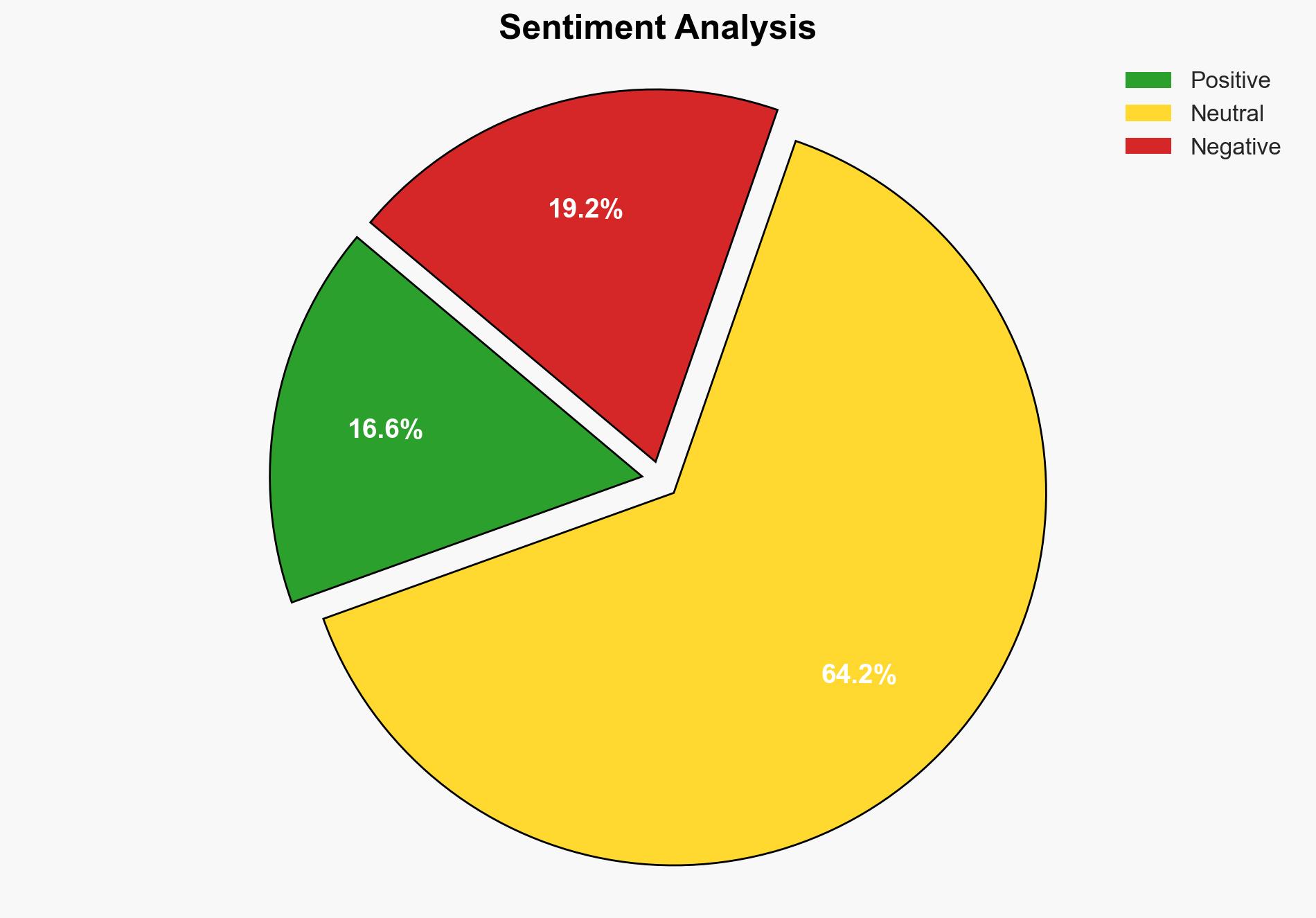Making the bloom a desert – Mondoweiss
Published on: 2025-03-09
Intelligence Report: Making the Bloom a Desert – Mondoweiss
1. BLUF (Bottom Line Up Front)
The article from Mondoweiss critically examines the historical and ongoing narratives surrounding the Israeli-Palestinian conflict, particularly the phrase “make the desert bloom,” which has been used to justify territorial and cultural transformations. The report highlights the juxtaposition of this narrative with the harsh realities faced by Palestinians, as depicted through media and art. Key findings suggest that the narrative serves as a tool for cultural and political justification of actions perceived as aggressive or colonial. Recommendations focus on addressing these narratives through diplomatic engagement and media literacy initiatives.
2. Detailed Analysis
The following structured analytic techniques have been applied for this analysis:
Scenario Analysis
The narrative of “making the desert bloom” could continue to influence international perceptions, potentially leading to increased tensions and misunderstandings. Future scenarios include heightened regional instability if narratives are not addressed.
Key Assumptions Check
Assumptions that the narrative is universally accepted or benign are challenged. The analysis reveals that such narratives can exacerbate tensions and are not merely rhetorical.
Indicators Development
Indicators of escalating threats include increased use of similar narratives in media, heightened social media activity around these themes, and any shifts in international diplomatic stances.
3. Implications and Strategic Risks
The perpetuation of the “make the desert bloom” narrative poses risks to regional stability and international relations. It may contribute to cultural misunderstandings and justify aggressive policies. The narrative’s impact on public opinion and policy-making could lead to increased tensions and conflict in the region, affecting economic interests and national security.
4. Recommendations and Outlook
Recommendations:
- Engage in diplomatic dialogues to address and reframe narratives that contribute to regional tensions.
- Implement media literacy programs to educate the public on the implications of historical and cultural narratives.
- Encourage cultural exchanges to foster mutual understanding and counteract divisive narratives.
Outlook:
Best-case scenario: Successful reframing of narratives leads to improved relations and reduced tensions.
Worst-case scenario: Continued use of divisive narratives exacerbates conflict and instability.
Most likely outcome: Ongoing tensions with periodic escalations influenced by media and political rhetoric.
5. Key Individuals and Entities
The report references Levi Eshkol, Bisan Owda, and Jamal Ashour. These individuals are significant in the context of the narrative and its cultural impact. The analysis does not provide roles or affiliations to maintain focus on the narrative’s influence.





